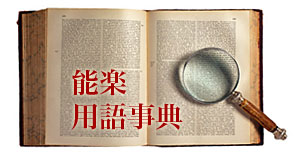Komparu School [Taiko-kata] (金春流[太鼓方])
One of the Noh drum (taikoi) schools, also called the Sōemon School. The founder, Komparu Saburō Toyouji (died 1458), was the uncle of Komparu Zenchiku and a disciple of Kanze Yoshirō Yoshikuni (1440-1493), the founder of the taiko-kata Kanze School. The fifth generation Hikosaburō Naganori (Sōi) changed his name to Kawai Sōemon, and after his son, the sixth generation Sōemon Ippō (Sōgan), was employed by Tokugawa Ieyasu, it came to be known as the Sōemon School. During the Edo period, it mainly served as musical accompaniment for the Komparu School. After the Meiji Restoration, the head family became defunct for a time but was revived in 1916 by the twenty-first generation Komparu Sōemon Kuniyasu (1897-1942), who came from the Masumi family in Kumamoto. Initially known for its intense and passionate performance style, the school's artistry became more delicate and elegant after the revival of the head family. Today's performers are active nationwide, including in Tokyo and Osaka.

